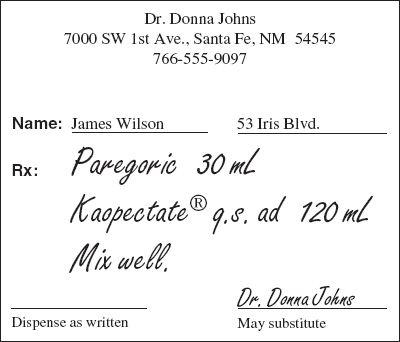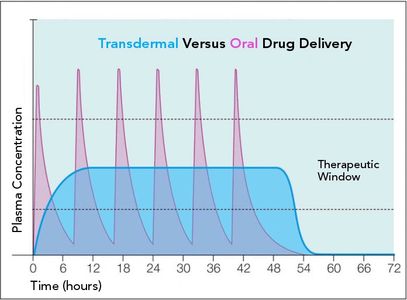J Control Release 1991:15:237-248 Your doctor may also prescribe you naloxone if you are living in a household where there are small children or someone who has abused street or prescription drugs. http://www.fda.gov/Drugs/DrugSafety/ucm085729.htm, American Society of Health-System Pharmacists, Inc. Disclaimer, U.S. Department of Health and Human Services. It is important not to leave a clump, glob, or thick area of medication on the ear because it will be easily dislodged if your pet shakes its head after administration.
J Biol Chm 2001:276:32403-6. Malcolm Weir, DVM, MSc, MPH; Ernest Ward, DVM, Contributors: Malcolm Weir, DVM, MSc, MPH; Ernest Ward, DVM. Also tell your doctor if you have or have ever had lung disease such as chronic obstructive pulmonary disease (COPD; a group of diseases that affect the lungs and airways), a head injury, a brain tumor, or any condition that increases the amount of pressure in your brain. Current and previous issues are available online at If your pet is prescribed a transdermal medication patch, your veterinarian will often shave an area to affix the patch.
To better understand this difference, it is important to understand the skin and its barrier function.
Continuing advances in skin penetration enhancement are allowing new and old drugs to be administered transdermally, providing prolonged therapeutic effects and improved patient safety. The skin is the largest organ of the human body comprising roughly 10% of the bodys mass. Tell your doctor if you have or have ever had slowed breathing or asthma.
If the patch accidentally comes off of your body and sticks to another person's skin, immediately remove the patch, wash the area with clear water, and get emergency medical attention. When you are finished applying the patch, wash your hands with water right away. Other examples of related reports submitted to PA-PSRS include: There are a number of strategies that may help decrease the risk of error associated with the use of transdermal patches, such as: The Pennsylvania Patient Safety Advisory may be reprinted and distributed without restriction,
URL of this page: https://medlineplus.gov/druginfo/meds/a601202.html. This is more common when you first start using fentanyl patches. Another is that practitioners and patients often do not realize that a significant amount of medication resides in the patch even after their intended period of application has expired. Patches, by themselves, do not enhance the ability of drug molecules to permeate the skin but can increase drug absorption due to prolonged application times. To use the sharing features on this page, please enable JavaScript. Do not wear two patches at once unless your doctor has told you that you should. People who are not being treated with fentanyl patches may be seriously harmed or may die if the sticky side of a patch touches their skin. CPEs are pharmacologically inactive compounds that diffuse and partition the skin and reversibly interact with the stratum corneum components, specifically the intercellular lipid bilayers. If your pet is prescribed a transdermal gel, you may need someone to assist you, especially at first. White Paper byRobert L. Wilbur, Pharm.D., CPh | Executive Director, Medical Affairs, Gensco Pharma. Talk to your doctor about how you are feeling during your treatment with fentanyl patches. Taking certain medications with fentanyl may increase the risk of serious or life-threatening breathing problems, sedation, or coma. Targeted drug delivery to the skin and deeper tissues; The role of physiology, solute structure, and disease. tell your doctor if you have or have ever had seizures; slowed heartbeat; difficulty urinating; low blood pressure; or thyroid, heart, liver, pancreas, gallbladder, or kidney disease. tell your doctor and pharmacist what other prescription and nonprescription medications, vitamins, and nutritional supplements you are taking or plan to take. The ideal application site for transdermal medications is one that has minimal hair and that cannot be easily licked or rubbed. Most transdermal drugs must be dissolved in a gel or suspended in a patch. In case of overdose, remove the fentanyl patch from the victim's skin and call local emergency services at 911. Leave the new patch in place for 72 hours.  If you use fentanyl with any of these medications and you develop any of the following symptoms, call your doctor immediately or seek emergency medical care: unusual dizziness, lightheadedness, extreme sleepiness, slowed or difficult breathing, or unresponsiveness. slowly and deliberately apply (squirt) the correct amount of medication onto your pets ear. They face to the water because they are polar.
If you use fentanyl with any of these medications and you develop any of the following symptoms, call your doctor immediately or seek emergency medical care: unusual dizziness, lightheadedness, extreme sleepiness, slowed or difficult breathing, or unresponsiveness. slowly and deliberately apply (squirt) the correct amount of medication onto your pets ear. They face to the water because they are polar.
In addition, because they are absorbed directly into the bloodstream, and avoid initially passing through the intestinal tract and liver, drugs that are administered transdermally may be more effective or work faster than some oral medications, allowing for better treatments. What special precautions should I follow? The transdermal system created by Gensco Pharma utilizes a micelle forming vehicle that encapsulates the drug and combines with CPEs to further increase the amount and rate of permeation. It works by changing the way the brain and nervous system respond to pain. Transdermal medications are an excellent alternative for some veterinary drugs, and options are increasing each year. Be sure to schedule appointments with your doctor on a regular basis so that you do not run out of medication if your doctor wants you to continue using fentanyl patches. Fentanyl patches are only for use on the skin. Serious side effects may result if a pet inadvertently consumes a patch, especially one containing fentanyl, a pain-relief drug. However, most topically applied compounds and/or drugs are poorly absorbed, if at all.  More recently, transdermal delivery technology has been developed to treat a range of conditions beyond the local site of application. AHFS Patient Medication Information. To protect young children from poisoning, always lock safety caps and immediately place the medication in a safe location one that is up and away and out of their sight and reach. Tell your doctor if you or anyone in your family drinks or has ever drunk large amounts of alcohol, uses or has ever used street drugs, or has overused prescription medications, or has had an overdose, or if you have or have ever had depression or another mental illness.
More recently, transdermal delivery technology has been developed to treat a range of conditions beyond the local site of application. AHFS Patient Medication Information. To protect young children from poisoning, always lock safety caps and immediately place the medication in a safe location one that is up and away and out of their sight and reach. Tell your doctor if you or anyone in your family drinks or has ever drunk large amounts of alcohol, uses or has ever used street drugs, or has overused prescription medications, or has had an overdose, or if you have or have ever had depression or another mental illness.
DURAGESIC. difficulty falling asleep or staying asleep, uncontrollable shaking of a part of the body, pain, burning, tingling, or numbness in the hands or feet, skin irritation, redness, itching, or swelling in the area where you wore the patch, agitation, hallucinations (seeing things or hearing voices that do not exist), fever, sweating, confusion, fast heartbeat, shivering, severe muscle stiffness or twitching, loss of coordination, nausea, vomiting, or diarrhea, nausea, vomiting, loss of appetite, weakness, or dizziness, swelling of the eyes, face, mouth, tongue, throat, arms, hands, feet, ankles, or lower legs, difficulty thinking, talking, or walking normally, small, pinpoint pupils (black circles in the center of the eye). Additional doses may be given every 2 to 3 minutes, if symptoms return before medical help arrives. Due to this wide variability in permeability of various drug molecules, several strategies have been developed to facilitate drug permeation through the epidermis. Fentanyl patches may cause serious or life-threatening breathing problems, especially during the first 24 to 72 hours of your treatment and any time your dose is increased. Tell your doctor and pharmacist if you are taking or plan to take any of the following medications: amiodarone (Nexterone, Pacerone); aprepitant (Emend); benzodiazepines such as alprazolam (Xanax), chlordiazepoxide (Librium), clonazepam (Klonopin), diazepam (Diastat, Valium), estazolam, flurazepam, lorazepam (Ativan), oxazepam, temazepam (Restoril), and triazolam (Halcion);carbamazepine (Carbatrol, Epitol, Equetro, Tegretol, Teril); certain antifungals such as fluconazole (Diflucan), itraconazole (Onmel, Sporanox), and ketoconazole (Nizoral); clarithromycin (Biaxin, in Prevpac); diltiazem (Cardizem, Cartia, Diltzac, Taztia); erythromycin (E-Mycin, Erythrocin); fosamprenavir (Lexiva); medications for mental illness and nausea; other medications for pain; muscle relaxants; nefazodone; nelfinavir (Viracept); phenytoin (Dilantin, Phenytek); rifampin (Rifadin, Rimactane, in Rifamate, in Rifater); ritonavir (Norvir, in Kaletra); sedatives; sleeping pills; tranquilizers; troleandomycin (TAO) (not available in the United States); and verapamil (Calan, Covera, Verelan). Do not use a fentanyl patch that is cut, damaged, or changed in any way. Other potential issues include: When using transdermal formulations, your veterinarian and pharmacist will work closely together to ensure that your pet receives the proper amount of medication. often include one or more chemical penetration enhancers to increase transdermal penetration to achieve the desired outcome. However, errors associated with the use of fentanyl (DURAGESIC, Fentanyl is considered a high alert medication in PA-PSRS, which means that, while not necessarily more prone to medication errors, if an error does occur, there is a greater risk of patient harm or death. AIChE J 1975:21:985-996 Understanding the formulation and penetration differences between topical and transdermal medications is crucial to selecting the appropriate product for a specific use. Fentanyl patches may cause other side effects. Another is that practitioners and patients often do not realize that a significant amount of medication resides in the patch even after their intended period of application has expired. Avoid physical activity that might cause you to get very hot.
It looks like your browser does not have JavaScript enabled. you should know that this medication may decrease fertility in men and women. Do not place patches in your mouth or chew or swallow the patches. This may cause serious problems, including overdose and death.
Do not use any soaps, lotions, alcohols, or oils. 



